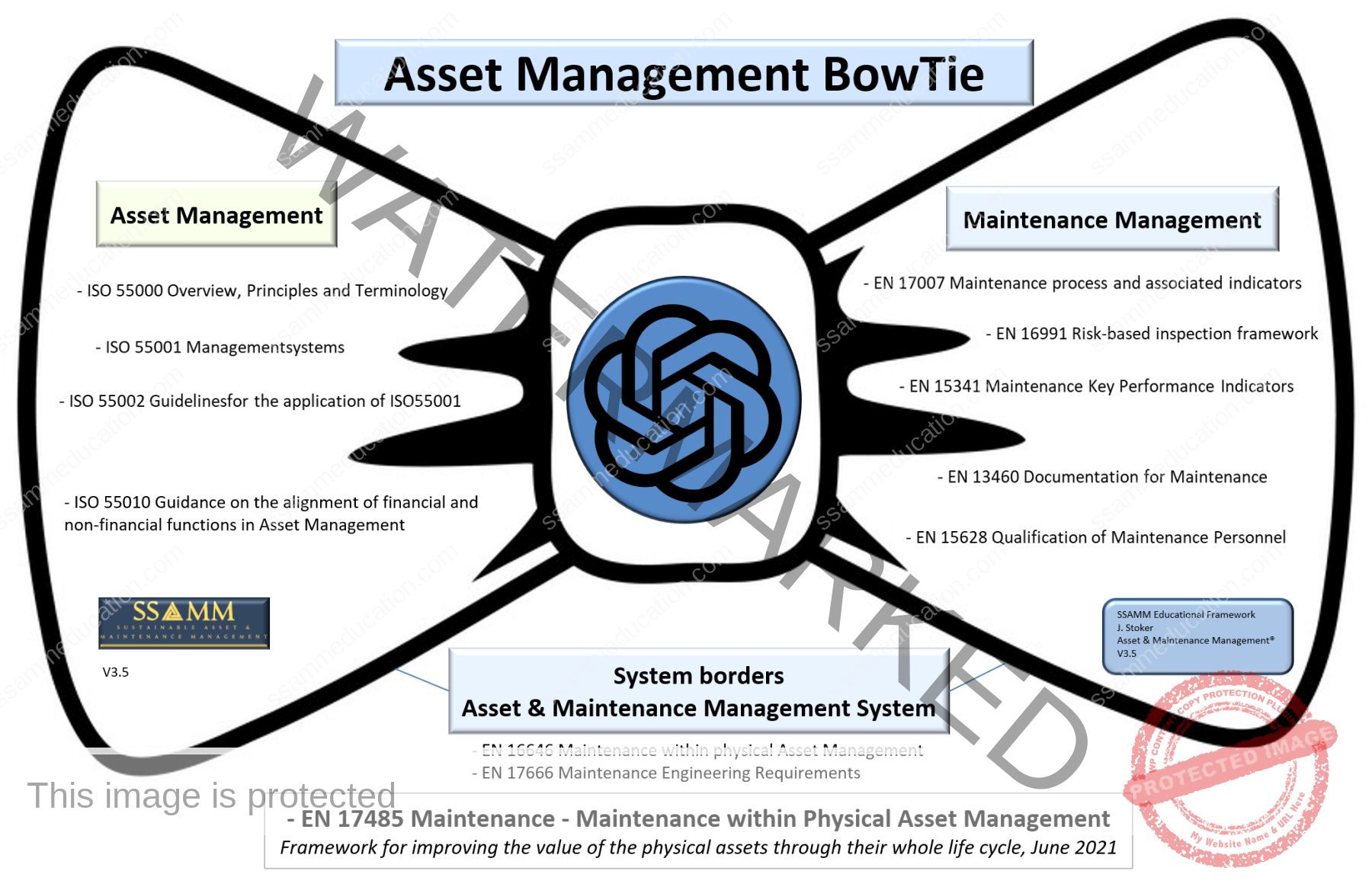Version: 15 October 2022 Table of ContentFollow for updates Jan Stoker
The chapter on the Asset Management BowTie (AM-BowTie) stands as a cornerstone, encapsulating a groundbreaking approach to asset and maintenance management. This chapter delves into the AM-BowTie, a model that synergizes various international standards, particularly aligning with the EN-17485 standard of June 2021, to forge a comprehensive framework for enhancing the value of physical assets throughout their lifecycle.
This model serves as a fundamental structure for the entire book, guiding readers through the intricate process of deriving an effective Asset Management System. The AM-BowTie is explained in this article Click Here, but the book goes deeply into the ‘systemic’ application of the AM-BowTie. Article AM-BowTie
AM-BowTie Left Side: Asset Management
The left side of the AM-BowTie, rooted in the ISO 55000 series, underscores a systematic and structured methodology for asset management. This side of the model emphasizes the importance of aligning asset management strategies with organizational objectives, ensuring a comprehensive system that covers all aspects of the asset lifecycle.
AM-BowTie Right Side: Maintenance Management
In contrast, the right side of the AM-BowTie focuses on Maintenance Management, exploring standards such as EN 17007, EN 16991, and others. This side highlights the critical elements of risk assessment, maintenance strategy, and performance indicators, integral to the effective management and implementation of maintenance practices.
The BowTie Bridge: Connecting Asset and Maintenance Management
At the heart of the AM-BowTie model is the bridge formed by standards like EN-16646, EN-17666, and EN-17485. This central connection harmonizes the asset management system standards with detailed maintenance standards, creating a unified asset management strategy.
Deepening the Subject with EN-17485
The EN-17485 standard plays a pivotal role in this model, offering a methodological framework that links maintenance standards with the ISO 5500x series. It provides a practical starting point for detailed maintenance sub-functions, ensuring a cohesive approach to asset management.
Asset Management BowTie 5.0: Embracing Industry 5.0 and AI In the era of Industry 5.0 and AI, the AM-BowTie model evolves to integrate these advanced technologies, paving the way for predictive maintenance, enhanced risk assessments, and smarter decision-making processes.
The BowTie and the Digital Line of Sight
The integration of the Digital Line of Sight with the AM-BowTie model deepens the understanding of how asset and maintenance management can be aligned with broader business goals, balancing costs, risks, and performance.
Article Digital Line of SightThe Digital Twin and the Asset Management BowTie
The combination of the Asset Management BowTie with digital twins emerges as a powerful tool for optimizing asset performance and enhancing risk management strategies.
Integrating Maintenance Engineering Activities in the Life Cycle
The chapter also explores how maintenance engineering activities, as described in EN-17666, play a crucial role throughout the lifecycle of an asset, ensuring its safe, sustainable, and cost-effective operation.
In summary, this chapter on the Asset Management BowTie in Jan Stoker’s “Sustainable Asset Management” offers a novel and integrative perspective on asset management. It is essential for modern organizations seeking to optimize their asset value and operational efficiency, especially in the context of evolving Industry 5.0 and AI technologies.
Content Intro & Fundamentals Asset Management


